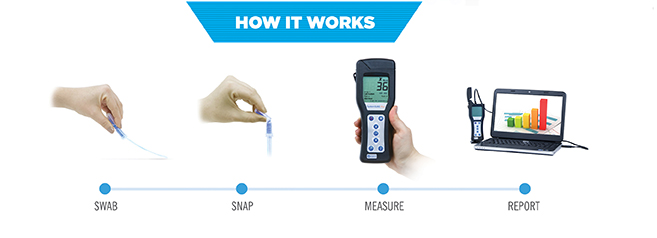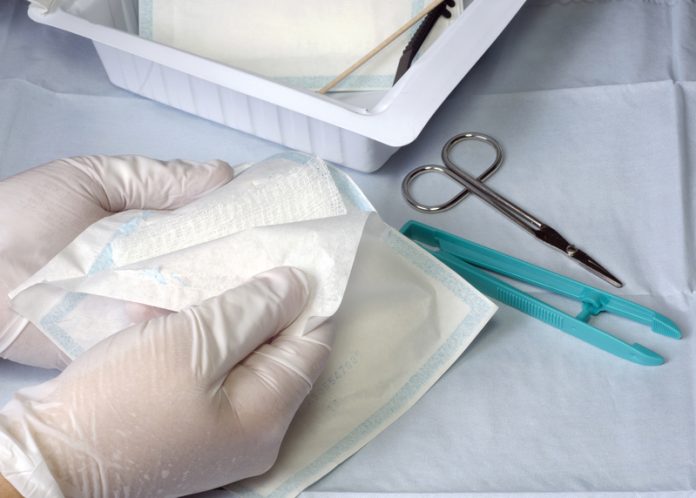Healthcare-Associated Infections (HCAIs) could be prevented using adequate cleaning methods. Here, Martin Easter of Hygiena International Ltd explains
Healthcare-Associated Infections (HCAIs) are preventable, with World Health Organization (WHO) statistics showing a prevalence of 7.1% in Europe, affecting 4.1 million patients and costing €7 billion and 37,000 deaths per annum. In the UK the prevalence is 6.4% affecting 300,000 patients and costing £1 billion.
Cleaning is one of the primary preventative measures against HCAIs. The NHS spends £725m per annum on cleaning and the NHS Productivity Review (2016) showed that £93m could be saved from better control of cleaning. However, cleaning is inadequately measured by visual assessment methods that are highly subjective and only detects gross lapses of practice. The visual assessment gives a “misleading over-estimate of cleaning that undermines infection control strategies” (Jones 2009).
The National Institute of Health Research recognises that “NHS places greater reliance on visual assessment of surface cleanness. However, reliance on observational evidence in judging cleaning efficacy is subjective and may be of questionable validity. ……. The use of ATP bioluminescence can provide this, giving an instant indication of total surface contamination and importantly an objective assessment of cleanliness. ATP detects invisible contamination and tells us that the surface has been cleaned.”
ATP bioluminescence is a simple rapid method for measuring organic soil. It requires a small handheld instrument and an all-in-one sample collection and testing device and generates giving a numerical result in 15 seconds. The use of ATP bioluminescence for cleaning verification is well established and has also been the highest recommendation by the Rapid Review Panel of the Department of Health and Public Health England in support of the fight against HCAIs. The test is also recognised by the CDC in the US and is written into a standard for cleaning in Denmark and Sweden. The test is simple and easy to use giving a numerical result in 15 seconds.
Earlier adopters such as North Tees and Hartlepool Trust have shown a consistent and marked improvement in cleanliness and reductions in infection rates since its introduction in 2008. The results have shown a more than 20% improvement in pass rates and a large reduction in fail scores to fewer than 5% with a corresponding decrease of 35% in C. difficile cases and a 39% reduction in infections per 10,000 occupied bed days. Monitoring officers, independent from nursing and environmental services staff, are assigned to act as project champions for individual facilities, reporting to departmental managers wherever poor cleaning was discovered and where corrective action is required. Monthly reports are circulated for cross-functional team meetings of nursing, facilities and infection control staff. This allows for open discussions on all cleaning and maintenance related issues and stimulates actions for improvement.
Hygiena SystemSURE Plus
The Hygiena SystemSURE Plus received the highest recommendation for the Department of Health and Public Health England’s Rapid Review Panel in 2009 and it has many different applications within hospitals including the routine testing of the patient room, identification of hotspots and hazard management, training of cleaning staff, and hand wash training and verification.
The benefits of the ATP cleaning verification system including a dramatic improvement in hospital cleanliness optimised cleaning performance and personnel training increased productivity commitment and morale of cleaning staff and reduced infections rates.
Southport and Ormskirk NHS Trust have been using the ATP technology for over 5 years for several applications and departments from medical equipment library, ITU, IP&C, domestic services, planned care, catering and operating theatres. It is also used for hand hygiene training and compliance monitoring. Andrew Chambers explained: “We also use Hygiena ATP monitoring when we may have had an incidence of VRE, for example after a clean the area might look clean but a number of spot ATP tests might show that the area is, in fact, not clean.
“ATP gives you a clean hospital,” said Val Hulme (Domestic Services Team leader). “When you’re doing a deep clean the staff know they are going to be tested they do everything to a very high standard. ATP has helped us to achieve that. When you have a number – like the ATP machine gives you – it’s more objective than subjective. You can’t argue with it.”
Andrew explained “If we have an area of concern with a particular infection or organism – we use ATP as part of the investigation. The benefit is that with ATP we can react immediately to the results on-site and put any necessary interventions into immediate effect. That way we’re safeguarding patients, which is what it’s all about”. Andrew added: “Low numbers mean it’s a safe environment for patients to be in”.
Regular objective monitoring of cleaning increases compliance of cleaning policies from 40% to 82%. This decreases contamination levels, reduces infection rates, maximises the use and value of existing resources thus saving time, money and lives.

Martin Easter
General Manager/Chief Scientific Officer
Hygiena International Ltd
HCAI’s – Healthcare-Associated Infections
Tel: +44 1923 818821
contactus@hygiena.com
www.linkedin.com/company/hygiena
www.youtube.com/user/HygienaTV
Please note: this is a commercial profile











